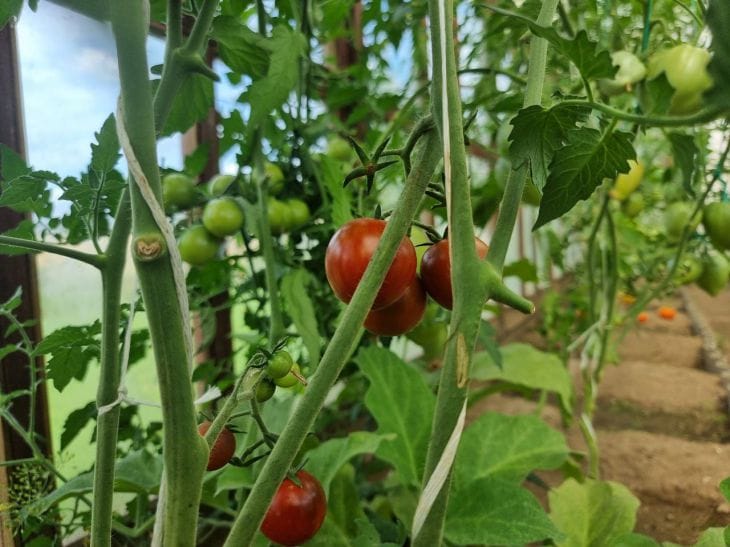Three Secrets of Tomato Care That the Pros Don't Tell You
Have you ever envied your neighbors whose tomatoes are the size of a fist, while yours are barely the size of a walnut?
The pros know tricks that are rarely discussed, but I will reveal them for you.
These three secrets—pruning, watering, and feeding—will help your tomatoes become the stars of your garden. Let's go!
Secret number one: pruning is not just a haircut
Pruning tomatoes is not just a cosmetic procedure, but a way to direct the plant's energy where it needs to go: to the fruit, and not to excess greenery.
Research from the University of California, Davis, shows that removing side shoots (suckers) during the first weeks of growth increases yields by 20-30%. Why?

Tomatoes are like little factories with a limited amount of energy. If you leave all the shoots, they'll waste resources on leaves instead of juicy fruit.
Imagine that you have 100 rubles: spend them on candy - you will be left without bread. So it is here.
But pruning is an art. You need to remove the side shoots until they are no longer than 10 cm, otherwise the plant will get stressed. Use sharp scissors or just pinch them off with your fingers to avoid infection.
And here's the catch: the technique depends on the variety. Determinate tomatoes (low-growing, like 'Roma') require minimal pruning - just remove the lower leaves touching the ground to avoid rot.
But indeterminate ones (tall ones, like 'Cherry' or 'Bull's Heart') need regular cleaning: check the leaf axils every week and remove new shoots.
Oregon gardener Jane Smith said:
"I was afraid to trim my tomatoes, I thought that the leaves were strength. But as soon as I started removing the side shoots, the fruits became larger and the taste became richer."
Try it yourself: choose one bush for the experiment and compare the results.
Secret number two: watering - don't overdo it
Tomatoes love water, but overwatering them is a sure way to watery fruits and weak roots. According to The Old Farmer's Almanac , a mature plant needs 4-5 liters of water once a week if there is no rain.
The main thing is to water at the root, not on the leaves, to avoid fungi like late blight. Frequent shallow watering makes the roots lazy: they remain at the surface and suffer in the heat. And deep rare watering makes them stretch downwards, where the moisture is more stable.
How do you know what you're doing wrong? Overwatering is indicated by yellow leaves and soft stems - the plant is literally drowning.
Underwatering is curled leaves and cracked fruit that burst from a sudden rush of water after a drought. Check the soil: stick your finger 5 cm deep. Dry? Water. Wet? Wait.
On hot days, you can increase the frequency to twice a week, but do not pour more than 3 liters at a time. A gardener I know once overwatered his tomatoes so much that they looked like watermelons - big, but tasteless. Do not repeat his mistake!
Secret Three: Nutrition - Balance is Everything
Fertilizers are like food for tomatoes, but it's easy to overfeed them. Many people rush to nitrogen to make the bushes grow lush, but in the end they get a jungle without fruits.
British gardening guru Monty Don advises in The Complete Gardener : Use a fertiliser with a focus on phosphorus and potassium (such as 5-10-10) every two weeks after the first flowers appear.
Nitrogen is needed only at the start to grow greenery. Then it only gets in the way.
What to do if you have already overdone it with nitrogen? Reduce fertilizing and add ash (a source of potassium) or bone meal (phosphorus). For example, a tablespoon of ash per bush works wonders: the fruits set faster, and the taste becomes brighter.
At different stages of growth, tomatoes need different elements: at the beginning - nitrogen for the leaves, during flowering - phosphorus for the ovary, and during fruiting - potassium for size and sweetness.
Organics like compost are also good, but apply them in the spring so they have time to decompose. These three secrets are your ticket to tomatoes that will have your neighbors talking!
